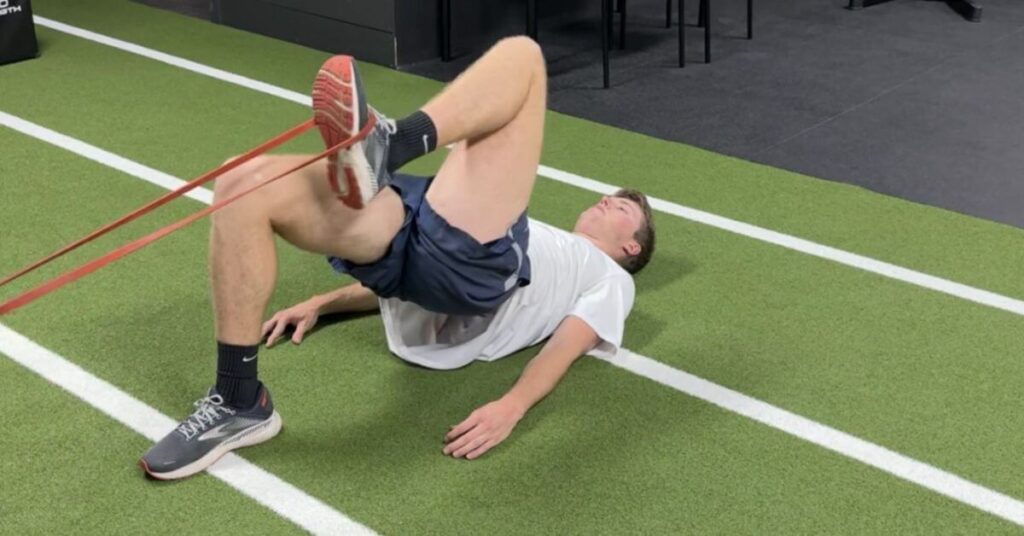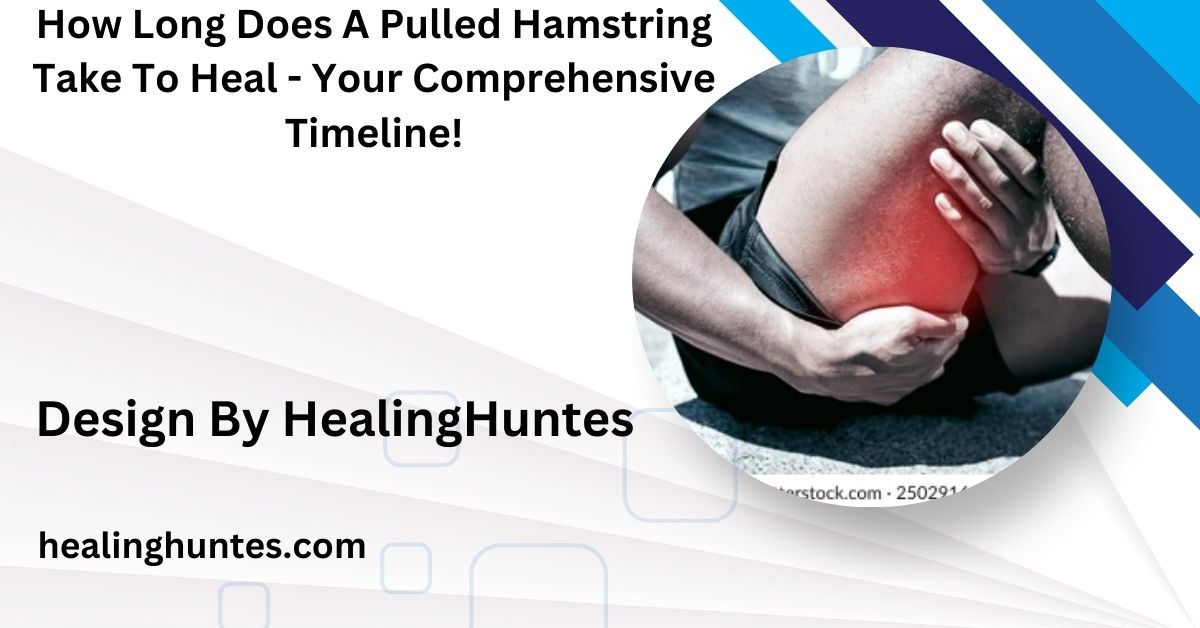How Long Does A Pulled Hamstring Take To Heal – Your Comprehensive Timeline!
Healing from a pulled hamstring can take between 2 to 8 weeks, depending on the injury’s severity, with proper care essential for a full recovery.
In this article, we will explore how long it typically takes to heal a pulled hamstring, factors influencing recovery time, and the best practices to speed up healing.
Understanding Hamstring Strain:

The hamstring muscles consist of three major muscles: the semitendinosus, semimembranosus, and biceps femoris. These muscles play a critical role in walking, running, and jumping, making hamstring strains particularly common in sports that involve sudden acceleration or deceleration.
A hamstring strain can range from mild to severe, depending on the extent of the injury. A mild strain (Grade 1) involves small tears in the muscle fibers, while a moderate strain (Grade 2) means a partial tear. A severe strain (Grade 3) occurs when the muscle is completely torn. The healing process for each grade differs significantly.
Factors Affecting Recovery Time:
The recovery time for a pulled hamstring can be influenced by several factors:
Severity of the Strain:
The severity of the injury is the most significant factor in determining how long it takes to heal a pulled hamstring. A mild strain (Grade 1) typically heals in 2 to 4 weeks, whereas a moderate strain (Grade 2) might take 4 to 8 weeks. Severe strains (Grade 3), which often require surgery, can take several months to heal.
Age and Overall Health:
Older individuals or those with pre-existing conditions such as arthritis or poor circulation may experience a longer recovery period. Younger and healthier individuals typically recover more quickly, as their muscles tend to heal faster and more effectively.
Treatment and Rehabilitation:
Proper treatment is essential for a faster recovery. This may involve rest, ice, compression, and elevation (R.I.C.E.), followed by rehabilitation exercises to restore strength and flexibility. A structured rehabilitation program, including physical therapy, can speed up recovery by preventing further injury and improving muscle function.
Also Read: How Long Do Nose Piercings Take To Heal – A Comprehensive Guide!
Symptoms of a Pulled Hamstring:
Before diving into recovery timelines, it’s essential to recognize the symptoms of a pulled hamstring. Common signs include:
- Sudden sharp pain at the back of the thigh
- Tenderness when touching the muscle
- Swelling and bruising
- Difficulty walking or bending the leg
If any of these symptoms occur, it is important to seek medical attention to confirm the diagnosis and determine the appropriate treatment plan.
Typical Recovery Time for a Pulled Hamstring:

Grade 1 Hamstring Strain:
A Grade 1 hamstring strain is the mildest form of injury, and it usually heals within 2 to 4 weeks. With appropriate rest and treatment, individuals can often return to light activities within this timeframe. However, it’s essential not to rush the healing process to avoid re-injury.
Grade 2 Hamstring Strain:
For a moderate strain, recovery typically takes 4 to 8 weeks. This stage may require more intensive rehabilitation, including physiotherapy to strengthen the muscles and improve flexibility. Returning to high-intensity activities too soon can lead to re-injury, which is why following a structured rehabilitation plan is crucial.
Grade 3 Hamstring Strain:
Grade 3 strains are the most severe and can take anywhere from 3 to 6 months to fully recover. In some cases, surgery may be required to repair the torn muscle. After surgery, rehabilitation can last several months, and individuals may need to follow a gradual process to return to sports or physical activity.
Also Read: How I Healed My Trigger Finger Naturally – A Comprehensive Guide!
Best Practices for Speeding Up Recovery:

While the healing time for a pulled hamstring depends on its severity, following these practices can help accelerate the recovery process:
Rest and Avoid Aggravating Activities:
It’s important to rest and avoid any activities that may strain the hamstring further. This includes running, jumping, or heavy lifting. Although some gentle movement is encouraged to prevent stiffness, high-impact exercises should be avoided until the muscle has healed.
Ice and Compression:
Applying ice to the injured area during the first 48 hours can help reduce swelling and pain. Additionally, using a compression bandage can help prevent further swelling. Ice should be applied in 15-20 minute intervals to avoid frostbite.
Physical Therapy and Stretching:
Once the acute pain subsides, physical therapy can help restore strength and flexibility to the hamstring. A physiotherapist will guide you through specific stretching and strengthening exercises to prevent future injury. Stretching is vital to improve the flexibility of the muscle, while strengthening exercises help to avoid muscle imbalances.
Gradual Return to Activity:
Returning to activity too quickly can worsen the injury or lead to a chronic hamstring issue. It’s crucial to follow a gradual return-to-sport protocol. This involves progressively increasing intensity and ensuring that the muscle has regained sufficient strength before returning to sports or vigorous activities.
Also Read: How Long Does A Sprained Foot Take To Heal – Sprained Foot Recovery Timeline!
Preventing Future Hamstring Injuries:
While some risk factors for hamstring strains, such as age and prior injuries, are unavoidable, several preventive measures can help reduce the chances of reinjury. These include:
- Regular Stretching and Flexibility Training: Maintaining flexibility in the hamstring muscles is crucial to preventing future strains.
- Strengthening Exercises: A strong hamstring muscle is less likely to suffer from strains. Focus on exercises that strengthen both the hamstrings and the surrounding muscles.
- Warm-Up Before Exercise: Always warm up thoroughly before engaging in any physical activity to prepare the muscles for intense movement.
- Proper Technique: Using proper running and jumping techniques can reduce the strain on your hamstrings.
FAQ’s
1. How long does it take for a pulled hamstring to heal?
Healing time depends on the severity of the strain. A mild strain takes 2-4 weeks, a moderate strain may take 4-8 weeks, and a severe strain could take 3-6 months.
2. Can I still exercise with a pulled hamstring?
Light exercise, such as walking or gentle stretching, may be okay depending on the severity of the strain. High-intensity activities should be avoided until full recovery.
3. Should I use heat or ice for a pulled hamstring?
Ice should be used within the first 48 hours to reduce swelling and pain, while heat may be used later to relax the muscles.
4. Is physical therapy necessary for a pulled hamstring?
Yes, physical therapy is highly recommended for moderate to severe strains, as it helps restore strength and flexibility to the muscle.
5. Can a hamstring injury happen again?
Yes, hamstring injuries can recur, especially if the muscle is not fully healed or if proper rehabilitation and strengthening exercises are not followed.
Conclusion
Healing from a pulled hamstring depends on the injury’s severity, the treatment plan, and the individual’s dedication to following recovery protocols. With proper care, most individuals recover within a few weeks, but more severe strains may require months of rehabilitation. By following a comprehensive treatment plan that includes rest, ice, compression, physical therapy, and gradual reintroduction to activity, you can optimize your recovery and prevent future injuries. Remember, patience and consistency are key to fully recovering from a hamstring strain.






